Assessing Your Dog's Temperament and Behavior
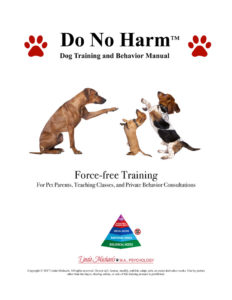
When preparing to introduce a new baby into your home, it is crucial to assess your dog's temperament and behavior to ensure a smooth transition. Every dog is unique, and understanding their natural tendencies and reactions can help you effectively prepare for their introduction to the new addition.
Start by observing your dog's behavior in various situations. Is your dog generally calm or easily excitable? Do they show any signs of aggression or fearfulness? Understanding these traits can help you anticipate potential challenges and develop strategies to address them.
Additionally, consider how your dog has interacted with other children or babies in the past. Have they displayed any protective or possessive behaviors? This information can provide insight into how they might respond to a new baby in the house.
It may also be beneficial to seek professional advice from a veterinarian or animal behaviorist. They can evaluate your dog's temperament more objectively and provide tailored guidance based on their expertise.
By assessing your dog's temperament and behavior, you will be better equipped to create a positive environment for both your furry friend and your new baby.
1 Understanding your dog's behavior and temperament

Understanding your dog's behavior and temperament is crucial when preparing them for the arrival of a new baby. Each dog has its own unique personality, and it's important to assess their temperament to anticipate any potential challenges or concerns.
One way to understand your dog's behavior is by observing their reactions in different situations. Do they become anxious or fearful? Are they easily excitable or more laid-back? By paying attention to their responses, you can gain insights into how they may react to the presence of a new baby in the household.
Additionally, it's essential to consider your dog's past experiences and history. Have they been socialized with other children or babies before? How do they interact with unfamiliar people or animals? These factors can give you a better understanding of how your dog may behave around a new baby.
By understanding your dog's behavior and temperament, you can tailor your approach to introducing them to the new addition to ensure a smooth transition.
2 Identifying potential challenges and concerns
Identifying potential challenges and concerns is an important step in preparing your dog for the arrival of a new baby. Each dog is unique and may have different reactions to changes in their environment. By understanding your dog's behavior and temperament, you can anticipate any potential challenges that may arise.
One challenge to consider is how your dog may react to changes in routine. Dogs thrive on structure and predictability, so the arrival of a new baby can disrupt their established routines. This may lead to anxiety or behavioral issues if not addressed proactively.
Another concern is how your dog will respond to new sounds and scents associated with a baby. Crying, cooing, and the scent of diapers are all unfamiliar stimuli that could potentially overwhelm your dog. It's important to gradually introduce these new stimuli to help desensitize your dog and prevent any negative associations.
Additionally, some dogs may have difficulty adjusting to sharing attention and space with a new family member. They may exhibit signs of jealousy or possessiveness, which can lead to conflicts or aggression if not managed properly.
By identifying these potential challenges and concerns, you can take proactive steps to address them and ensure a smooth transition for both your dog and your new baby.
Preparing Your Dog for the Arrival

Preparing Your Dog for the Arrival
Before bringing a new baby into your home, it is important to prepare your dog for the upcoming changes. Dogs thrive on routine and structure, so establishing a daily routine can help ease the transition. This includes sticking to regular feeding and exercise schedules.
Introducing new sounds and scents can also help familiarize your dog with the presence of a baby. Playing recordings of baby sounds or using baby-scented products can gradually acclimate your dog to these new stimuli.
Training your dog for the arrival of a baby is crucial. Basic obedience commands such as sit, stay, and leave it should be reinforced consistently. Additionally, desensitizing your dog to baby-related items like cribs, strollers, and toys can prevent any negative associations.
By taking these steps to prepare your dog for the arrival of a baby, you will be setting them up for success in adapting to their new family member. Remember to be patient and provide positive reinforcement throughout the process.
1 Establishing a routine and structure
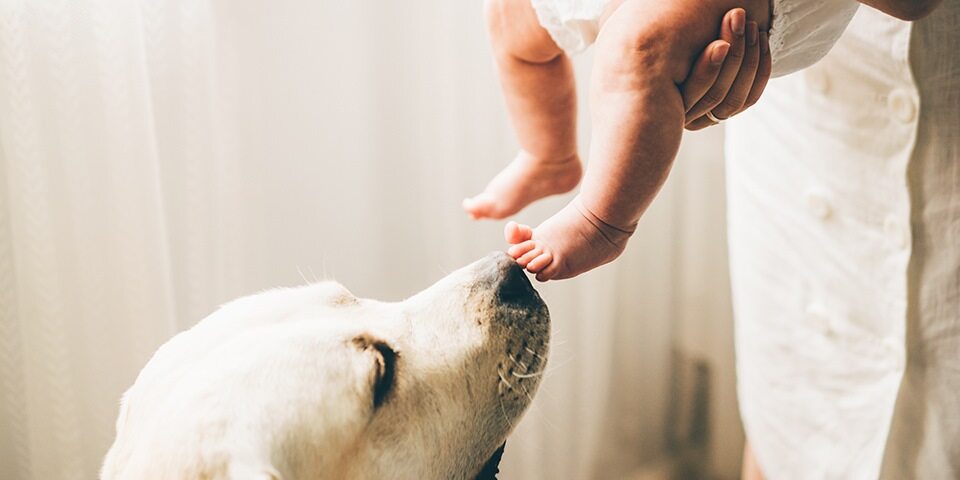
Establishing a routine and structure is crucial when preparing your dog for the arrival of a new baby. Dogs thrive on consistency, so introducing a structured daily routine can help them feel secure and reduce any anxiety they may experience during this transition.
Start by setting regular meal times for your dog and stick to them. This will not only provide stability but also prevent any potential food-related issues that may arise when the baby arrives. Incorporate regular exercise sessions into your dog's routine as well, ensuring they receive adequate physical and mental stimulation.
In addition to a routine, establish clear rules and boundaries for your dog. This includes areas of the house they are allowed in, furniture restrictions, and behaviors that are expected from them. Consistently reinforcing these rules will help your dog understand their place in the family hierarchy and prevent any potential conflicts once the baby arrives.
By implementing a routine and structure, you are helping your dog adjust to the changes that will come with the arrival of a new baby. This will create a sense of stability and provide a solid foundation for their interactions with the baby in the future.
2 Introducing new sounds and scents
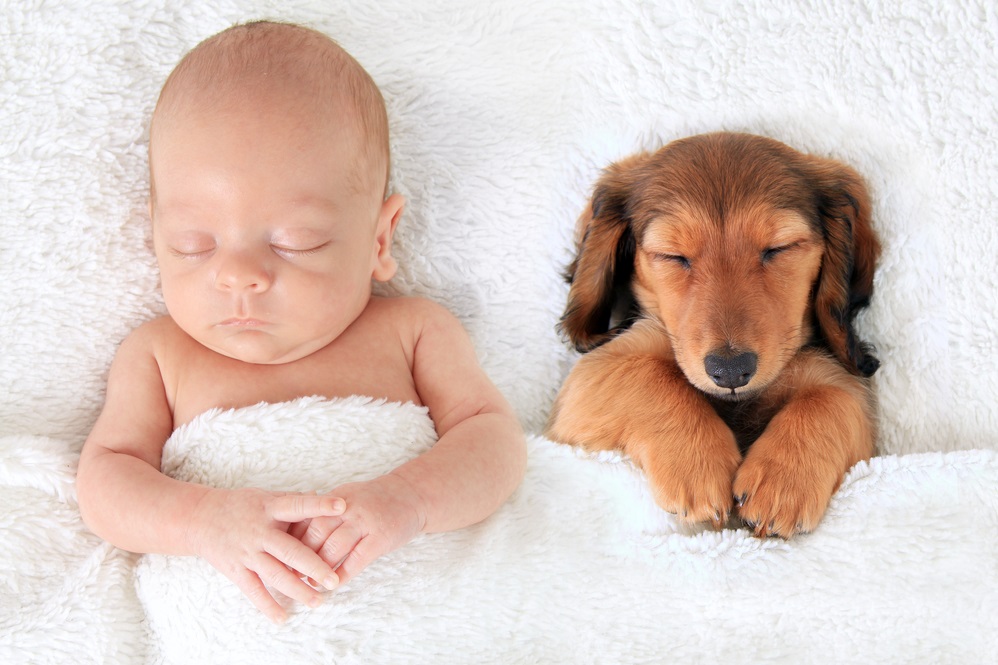
To prepare your dog for the arrival of a new baby, it is important to introduce them to new sounds and scents that they will encounter in the presence of a baby. This will help your dog become familiar and comfortable with these stimuli, reducing any anxiety or fear they may have.
Start by playing recordings of baby noises such as crying, cooing, and babbling. Gradually increase the volume over time so that your dog becomes accustomed to these sounds. This will prevent them from being startled when the actual baby arrives.
You can also introduce your dog to the scent of baby products such as lotion, powder, and diapers. Allow your dog to sniff these items and associate them with positive experiences, such as receiving treats or praise.
By exposing your dog to new sounds and scents associated with babies, you are helping them adjust to the upcoming changes in their environment. This proactive approach will ensure a smoother transition when the baby arrives.
Training Your Dog for the New Baby
Training your dog for the new baby is an essential step in ensuring a smooth transition for both your furry friend and your growing family. Start by reinforcing basic obedience commands such as sit, stay, and leave it, so that your dog understands and follows your instructions. This will help you maintain control in situations where you need your dog to be calm and obedient around the baby.
Introduce your dog to baby-related items gradually, such as toys, blankets, and clothing, so they become familiar with these new scents and textures. Use positive reinforcement techniques, such as treats or praise, to reward your dog for remaining calm and relaxed around these items.
It's important to supervise and control the initial interactions between your dog and the baby. Keep your dog on a leash during these encounters and reward them for calm behavior. Gradually allow more interaction under supervision, always prioritizing safety.
Continue to monitor your dog's behavior over time and address any signs of aggression or fear immediately. Seek professional help if needed.
With proper training and guidance, your dog can learn to adapt to the presence of a new baby and become a loving companion in this exciting new chapter of your family's life.
1 Basic obedience commands

Basic obedience commands are essential for ensuring the safety and well-being of both your dog and your new baby. By teaching your dog these commands, you can establish control and maintain a harmonious environment.
One important command to teach is "sit." This command can be used in various situations, such as when you need your dog to stay calm while you attend to the baby. Another crucial command is "stay," which will help you keep your dog at a safe distance from the baby when necessary.
"Leave it" is another useful command that can prevent your dog from approaching or grabbing objects that could pose a danger to the baby, such as small toys or choking hazards. And finally, "down" is a command that can encourage your dog to lie down calmly, allowing for more peaceful interactions with the baby.
Consistency and positive reinforcement are key when training these commands. By practicing them regularly and rewarding your dog with treats or praise, you can ensure that they become second nature for your furry friend.
Remember, teaching basic obedience commands not only benefits the safety of your new baby but also strengthens the bond between you and your dog. It's an investment in creating a positive and peaceful environment for everyone in the family.
2 Desensitizing your dog to baby-related items
One important step in preparing your dog for the arrival of a new baby is to desensitize them to baby-related items. This involves gradually introducing your dog to the sights, sounds, and smells associated with babies in order to familiarize them and reduce any potential anxieties or sensitivities.
Start by bringing baby items into the house, such as cribs, strollers, and toys. Allow your dog to sniff and investigate these items in a controlled manner. You can also play recordings of baby noises, such as crying or cooing, at a low volume to acclimate your dog to these sounds.
During these desensitization sessions, it's crucial to monitor your dog's behavior closely. Look for signs of anxiety or stress, such as pacing, panting, or avoidance. If you notice any signs of discomfort, take a step back and go at a slower pace.
Over time, gradually increase exposure to baby-related items and sounds. Use positive reinforcement techniques like treats or praise when your dog displays calm and relaxed behavior around these items. By desensitizing your dog to baby-related items, you are helping them adjust to the new addition to your family with ease.
Introducing Your Dog to the Baby
Introducing Your Dog to the Baby
When the time finally comes to introduce your dog to the new baby, it's important to proceed with caution and ensure a positive experience for everyone involved. Start by allowing supervised and controlled interactions between your dog and the baby. This means closely monitoring their interactions and being prepared to intervene if necessary.
To promote a positive association, use positive reinforcement and rewards when your dog behaves appropriately around the baby. Rewarding good behavior will help your dog understand that being near the baby is a good thing. It's also important to continue training your dog during these interactions, reinforcing basic obedience commands and desensitizing them to baby-related items.
Creating a safe environment is crucial during this time. Baby-proofing your home will not only protect your child but also prevent any accidents or unwanted behaviors from your dog. Additionally, establishing boundaries for your dog will help them understand their role in relation to the baby.
Throughout this process, it's essential to manage your dog's stress and anxiety. Watch out for signs of stress in your dog, such as panting, pacing, or excessive grooming. Use calming techniques and tools, such as soothing music or pheromone diffusers, to help alleviate their anxiety.
Encouraging positive associations is key to fostering a harmonious relationship between your dog and the baby. Associate the presence of the baby with positive experiences for your dog, such as treats or playtime. Allow supervised bonding time where your dog can be close to the baby while still being under supervision.
Continued supervision and monitoring are vital even after the initial introductions. Observe how your dog reacts and interacts with the baby over time. If you notice any signs of aggression or fear, it's important to address these issues promptly by seeking professional help or consulting with a certified dog trainer.
In conclusion, introducing your dog to the new baby requires careful planning and patience. By following these guidelines and taking the necessary steps to ensure a safe environment and positive associations, you can help create a harmonious and loving bond between your dog and the newest member of your family. Celebrate successful integration and embrace the new dynamic that the baby brings to your family.
1 Supervised and controlled interactions
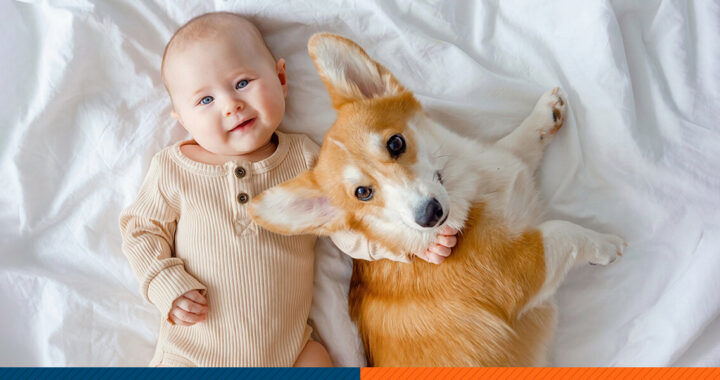
Supervised and controlled interactions between your dog and the new baby are crucial for ensuring a smooth transition. It is important to never leave them alone together unsupervised, especially in the beginning. This allows you to closely observe their behavior and intervene if necessary.
During these interactions, make sure to be calm and assertive, providing clear guidance to both your dog and the baby. Keep a close eye on your dog's body language, ensuring they are relaxed and comfortable around the baby. If your dog shows signs of stress or anxiety, such as growling or avoiding the baby, redirect their attention and give them space.
To further control the interactions, you can use baby gates or playpens to create physical barriers between your dog and the baby when necessary. This ensures that both parties have their own safe space while still allowing for supervised interaction.
Remember to reward positive behavior from your dog during these interactions, using treats or praise as a way to reinforce their good behavior. Gradually increase the duration of these supervised interactions over time as both your dog and the baby become more comfortable with each other.
By maintaining a vigilant watch over their interactions and providing guidance, you can help foster a positive relationship between your dog and the new baby.
2 Positive reinforcement and rewards
Positive reinforcement and rewards play a crucial role in introducing your dog to a new baby. By associating positive experiences with the presence of the baby, you can help create a harmonious relationship between them.
One effective way to reinforce positive behavior is through treats and praise. Whenever your dog displays calm and gentle behavior around the baby, reward them with their favorite treat or verbal praise. This will help them understand that good things happen when the baby is around.
Additionally, you can use toys as a reward during supervised interactions. Allow your dog to play with their favorite toy while in the presence of the baby, reinforcing the idea that positive experiences are associated with the baby's presence.
It's important to be consistent in rewarding positive behavior and to avoid punishing or scolding your dog during these interactions. Positive reinforcement helps build trust and confidence in your dog, fostering a positive and safe environment for both the baby and your furry friend.
By utilizing positive reinforcement and rewards, you are encouraging your dog to form positive associations with the baby, leading to a healthy and happy relationship between them.
Ensuring a Safe Environment
When introducing a new baby to your dog, it is crucial to ensure a safe environment for both the baby and the dog. This means taking precautions to prevent any potential accidents or harm.
One important step is baby-proofing your home. Just like you would do for a crawling baby, make sure to secure electrical outlets, keep hazardous substances out of reach, and use safety gates to restrict access to certain areas.
Additionally, establishing boundaries for your dog is essential. Create designated areas where your dog is allowed and not allowed to enter. This will help maintain a sense of order and prevent any unwanted interactions.
Regularly supervise interactions between your dog and the baby. This will allow you to intervene if necessary and prevent any potential incidents. It's important to remember that even the friendliest dogs may need time to adjust to the new addition.
By ensuring a safe environment, you can create a harmonious space where your dog and baby can coexist comfortably.
1 Baby-proofing your home
Baby-proofing your home is an essential step in ensuring the safety of both your new baby and your furry friend. Start by securing any potential hazards that may be within your dog's reach. Cover electrical outlets, secure cords and wires, and install safety gates to restrict access to certain areas. Make sure that any toxic substances, such as cleaning supplies or plants, are stored out of your dog's reach. It's also important to keep small items, like toys or choking hazards, off the floor where your dog can easily grab them.
Additionally, consider creating a safe space for your dog where they can retreat when they need some alone time. This can be a designated room or area with their bed, toys, and water bowl. Providing them with their own space will help them feel secure and prevent any potential conflicts with the baby.
Remember to regularly assess and update the baby-proofing measures as your little one grows and becomes more mobile. By ensuring a safe environment for both your dog and baby, you can promote a harmonious living situation for everyone in the family.
2 Establishing boundaries for your dog
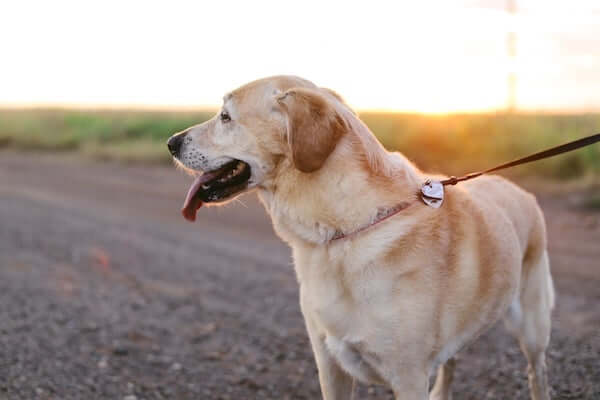
Establishing boundaries for your dog is crucial when introducing them to a new baby. Not only does it ensure the safety of both the dog and the baby, but it also helps create a harmonious environment for everyone involved. One way to establish boundaries is by designating specific areas of the house as off-limits for the dog, such as the nursery or play area. This can be done by using baby gates or closed doors.
Additionally, it's important to teach your dog to respect personal space. Encourage them to stay a certain distance away from the baby while still allowing them to observe from a safe distance. This can be achieved through consistent training and positive reinforcement.
Furthermore, establishing rules for interactions between the dog and baby is essential. Teach your dog to be calm and gentle when near the baby, and discourage any rough play or jumping. By setting clear boundaries and expectations, you can ensure a peaceful coexistence between your dog and new baby.
Remember, consistency is key when establishing boundaries for your dog. Stick to the rules you've set in place and reinforce them regularly to maintain a safe and harmonious environment for all family members.
Managing Your Dog's Stress and Anxiety

Managing Your Dog's Stress and Anxiety
When introducing a new baby into the home, it's important to be mindful of your dog's stress and anxiety levels. Dogs can often sense changes in their environment and may become stressed or anxious during this transition period. It is crucial to recognize the signs of stress in your dog and take steps to manage it effectively.
One way to help manage your dog's stress is by providing a calm and quiet space for them to retreat to when they feel overwhelmed. This can be a designated area in the house where your dog feels safe and secure. Additionally, using calming techniques such as soothing music or diffusing calming essential oils can help create a relaxing atmosphere for your dog.
Another important aspect of managing your dog's stress is maintaining their routine and providing them with plenty of mental and physical stimulation. Stick to regular feeding times, walks, and play sessions to ensure they feel a sense of normalcy amidst the changes happening in the household.
It is also helpful to introduce your dog to interactive toys or puzzles that can keep their mind occupied and alleviate any boredom-related stress. These toys can provide a distraction and prevent destructive behaviors that may arise from anxiety.
If your dog continues to exhibit signs of stress or anxiety, it may be beneficial to consult with a professional dog trainer or behaviorist who can provide guidance on additional techniques or strategies to alleviate their discomfort.
By being proactive in managing your dog's stress and anxiety, you can create a harmonious environment for both your canine companion and your new baby. Remember, a happy and relaxed dog will result in a smoother integration process for everyone involved.
1 Recognizing signs of stress in your dog
Recognizing signs of stress in your dog is crucial for ensuring their well-being when introducing them to a new baby. Dogs, like humans, can experience stress and anxiety in various situations. It's important for you as the owner to be able to identify these signs and take appropriate actions to alleviate their stress.
One common sign of stress in dogs is excessive panting or drooling. If you notice your dog panting heavily or drooling more than usual, it could be a sign of stress. Other signs include pacing, restlessness, trembling, and excessive barking or whining. Keep an eye out for changes in appetite or sudden weight loss, as these may also indicate stress.
Furthermore, watch for any changes in your dog's body language. They may display behaviors such as hiding or seeking isolation, tail tucking, or ears pinned back. These are clear indicators that your dog is feeling stressed and uncomfortable.
It's important to note that every dog is different, and they may exhibit different signs of stress. By being attentive to your dog's behavior and body language, you can take appropriate measures to reduce their stress levels and create a calm environment for both your dog and the new baby.
2 Using calming techniques and tools

Using calming techniques and tools can be beneficial in helping your dog adjust to the presence of a new baby. It is important to recognize signs of stress or anxiety in your dog and take proactive measures to alleviate their discomfort.
One effective technique is providing a safe and quiet space for your dog to retreat to when they are feeling overwhelmed. This can be a designated area in your home where they can relax and have some alone time.
Additionally, you can consider using calming aids such as pheromone diffusers or anxiety wraps. Pheromone diffusers release synthetic pheromones that help create a sense of calm for your dog. Anxiety wraps, like Thundershirts, provide gentle pressure that can help soothe anxious dogs.
Another technique is incorporating relaxation exercises into your dog's routine, such as massage or gentle music. These activities can help promote a sense of relaxation and reduce stress levels.
Remember to consult with your veterinarian or a professional dog trainer for guidance on the best calming techniques and tools for your specific dog.
Encouraging Positive Associations

Encouraging Positive Associations
To ensure a smooth transition for your dog when introducing them to your new baby, it is important to encourage positive associations. By creating positive experiences and associations with the baby, you can help your dog develop a bond and acceptance of the new family member.
One effective way to create positive associations is by associating the baby with enjoyable experiences for your dog. For example, you can engage in activities such as playing with your dog while the baby is present or giving treats and praise when the baby is nearby. This will help your dog associate the presence of the baby with positive experiences and reinforce their acceptance.
Additionally, allowing supervised bonding time between your dog and the baby can also foster positive associations. By closely monitoring these interactions, you can ensure that both your dog and the baby are safe and comfortable. Encourage gentle interaction, such as allowing your dog to sniff or lick the baby under supervision. Gradually increase the duration of these interactions as your dog becomes more comfortable.
Remember, consistency is key when encouraging positive associations. By consistently providing positive experiences and rewards whenever the baby is present, your dog will gradually form a positive association with their new sibling.
By promoting positive associations between your dog and the baby, you are setting the foundation for a harmonious relationship within the family. Keep in mind that every dog is unique, and it may take time for them to adjust to the new addition. Patience and understanding are essential factors in ensuring a successful integration of your furry friend into the family dynamic.
1 Associating the baby with positive experiences

One crucial step in introducing your dog to a new baby is to associate the baby with positive experiences. This helps create a positive association between your dog and the new addition to the family.
To accomplish this, start by allowing your dog to sniff and investigate the baby's belongings, such as blankets or toys. Reward your dog with praise and treats when they display calm and relaxed behavior around these items.
Additionally, gradually expose your dog to the sights, sounds, and smells associated with the baby. For example, you can play recordings of baby sounds or have someone carry a baby doll around the house. Again, reward your dog for staying calm and relaxed during these simulations.
By associating the baby with positive experiences, your dog will begin to understand that the new addition brings pleasurable outcomes. This will help foster a harmonious relationship between your dog and the baby. Remember to always supervise interactions and provide plenty of love and attention to both your dog and the newest member of the family.
2 Allowing supervised bonding time
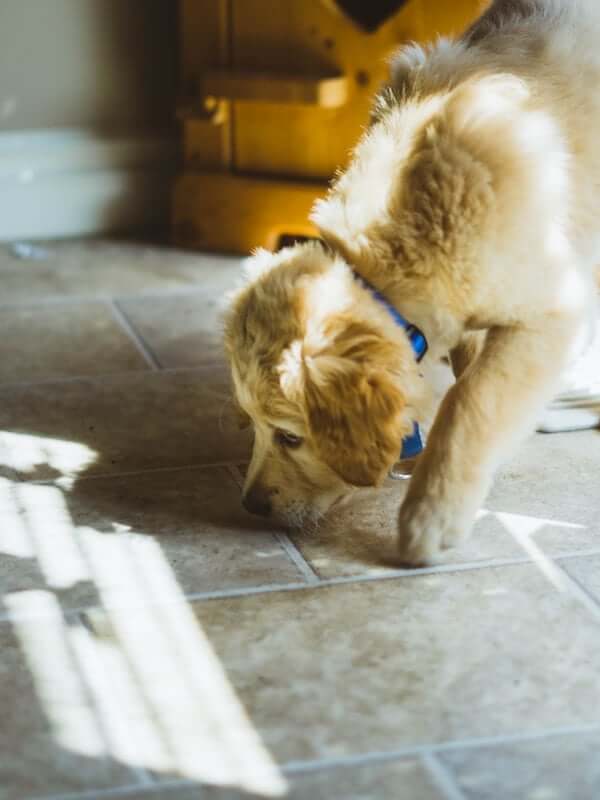
Allowing supervised bonding time is crucial for fostering a positive relationship between your dog and the new baby. While it's important to prioritize safety, it's equally important to provide opportunities for your dog to bond and develop a connection with the baby.
To facilitate this bonding process, ensure that all interactions are closely supervised. This allows you to closely monitor your dog's behavior and intervene if necessary. Start by allowing your dog to approach the baby under your watchful eye, making sure they are calm and gentle. Reward your dog for calm behavior and positive interactions with the baby.
It's also essential to set boundaries during these bonding sessions. Teach your dog appropriate behaviors around the baby, such as not jumping or getting too close to their face. Encourage gentle sniffing and exploration at a comfortable distance.
Remember, bonding takes time and patience. Allow both your dog and the baby to gradually become familiar with each other through supervised interactions. By creating an environment of trust and positive experiences, you can promote a strong bond between your dog and the new addition to your family.
Continued Supervision and Monitoring

Continued Supervision and Monitoring
Once your dog has been introduced to your new baby, it is crucial to continue supervising and monitoring their interactions. This is important to ensure the safety of both your dog and your baby, as well as maintain a positive relationship between them.
Keep a close eye on how your dog behaves around the baby. Watch for any signs of aggression, fear, or discomfort. If you notice any concerning behaviors, it is essential to address them immediately and seek professional help if necessary.
Continue to provide positive reinforcement for your dog's good behavior around the baby. Reward them with praise or treats when they exhibit calm and gentle behavior. This will reinforce their positive association with the baby and encourage more positive interactions.
As your baby grows and becomes more mobile, it is important to adapt and modify your supervision strategies accordingly. Always be vigilant when your dog and baby are in the same space, even if they have previously had successful interactions.
By continuing to supervise and monitor their interactions, you can ensure a safe and harmonious relationship between your dog and baby as they grow together.
Conclusion
Introducing a new baby to your dog can be a challenging but rewarding process. By assessing your dog's temperament, preparing them for the arrival of the baby, training them appropriately, introducing them gradually, ensuring a safe environment, managing their stress and anxiety, encouraging positive associations, and providing continued supervision and monitoring, you can successfully integrate your dog into your growing family.
Remember to celebrate each milestone achieved in the integration process and embrace the new dynamic that comes with having a dog and a baby together. With patience, consistency, and love, you can create a harmonious environment where both your furry friend and precious little one can thrive.
1 Monitoring interactions over time
Once your dog has been introduced to the new baby, it is crucial to continue monitoring their interactions over time. This ongoing supervision will allow you to ensure that both your dog and baby are safe and comfortable in each other's presence.
Watch closely for any signs of aggression or fear from your dog. It is important to address these behaviors promptly to prevent any potential harm. Look for indicators such as growling, snapping, or excessive barking.
Additionally, observe how your dog reacts to the baby's presence and actions. Are they calm and relaxed or displaying signs of stress? Pay attention to their body language, such as their ears being pinned back or their tail tucked between their legs.
Continue providing guidance and reinforcement for positive behavior. Reward your dog whenever they display gentle and appropriate interactions with the baby. This will help them understand that being around the baby is a positive experience.
As time goes on, you can gradually increase the amount of supervised bonding time between your dog and baby. This allows them to become more familiar with each other and build a relationship based on trust and mutual respect.
Remember, the integration process takes time and patience. By monitoring interactions over time, addressing any issues that arise, and promoting positive associations, you can create a harmonious environment where your dog and baby can coexist happily together.
2 Addressing any signs of aggression or fear
Addressing any signs of aggression or fear in a dog is crucial when introducing them to a new baby. If your dog displays aggressive behavior or shows signs of fear, it is important to take immediate action to ensure the safety of both the dog and the baby. Ignoring these signs can lead to dangerous situations and potential harm.
To address aggression, seek professional help from a certified dog trainer or behaviorist who specializes in working with aggressive dogs. They can provide guidance on how to manage and modify your dog's behavior through positive reinforcement techniques.
In cases of fear, it is essential to gradually expose your dog to the baby in a controlled and positive manner. This can be done by allowing supervised interactions while ensuring the dog feels safe and comfortable. Gradually increase the exposure over time and use positive reinforcement to create positive associations with the baby.
Remember, it is important to never punish or scold your dog for showing signs of aggression or fear. Instead, focus on providing consistent training, guidance, and support to help them adjust to their new family dynamic. With patience and proper intervention, many dogs can overcome their fears and learn to coexist peacefully with a new baby.
Conclusion

In conclusion, introducing a new baby to your dog requires careful preparation and ongoing supervision. It is crucial to assess your dog's temperament and behavior, identifying any potential challenges or concerns that may arise. By establishing a routine and structure, introducing new sounds and scents, and training your dog with basic obedience commands, you can help them adjust to the changes that come with a new addition to the family.
Creating a safe environment by baby-proofing your home and establishing boundaries for your dog will ensure the well-being of both your baby and your furry friend. Managing your dog's stress and anxiety through calming techniques and tools is also important for a smooth transition.
Encouraging positive associations between your dog and the baby, allowing supervised bonding time, and continued supervision and monitoring of their interactions over time will help foster a harmonious relationship between them.
As the integration progresses successfully, it is essential to celebrate this achievement and embrace the new dynamic of your family. With patience, consistency, and love, you can create a bond between your dog and your baby that will last a lifetime.
1 Celebrating successful integration

Once your dog has successfully adjusted to the presence of the new baby, it's time to celebrate the successful integration of both your furry friend and your little one. This milestone is a testament to the hard work and dedication you put into preparing your dog for this significant life change.
To commemorate this achievement, consider organizing a special celebration or rewarding your dog with their favorite treats and toys. This reinforces the positive association between your dog and the baby, further strengthening their bond.
Additionally, take time to appreciate the new dynamic that has formed within your family. Witnessing your dog and baby interact in a harmonious and loving manner is truly heartwarming. Embrace the joy that comes with having both a faithful companion and an adorable little bundle of joy in your life.
Remember to continue providing supervision and monitoring during interactions, as well as addressing any signs of aggression or fear promptly. With patience, consistency, and proper training techniques, your dog and baby can grow up together as best friends, creating a lifelong bond that will bring immense happiness to your family.
2 Embracing the new dynamic of your family

Embracing the new dynamic of your family is an essential part of introducing your dog to a new baby. While it may initially seem overwhelming, with time and patience, your dog will become an integral part of your growing family.
As your baby grows, so too will the bond between them and your dog. Encourage positive interactions and create opportunities for supervised bonding time. Allow them to spend time together under your watchful eye, ensuring safety and comfort for both.
Remember, your dog is a member of the family too. Continue to provide love, attention, and care for them alongside your baby. This will help maintain a balanced and harmonious household.
Celebrate the successful integration of your dog and baby into your family by recognizing milestones and achievements. Whether it's your dog showing gentle affection towards the baby or your baby giggling at their furry companion, cherish these moments and acknowledge the progress made.
Embracing the new dynamic means creating a loving environment where both your dog and baby can thrive together. With love, patience, and ongoing supervision, you can successfully introduce your dog to a new baby and create a happy and harmonious family unit.




0 Comments